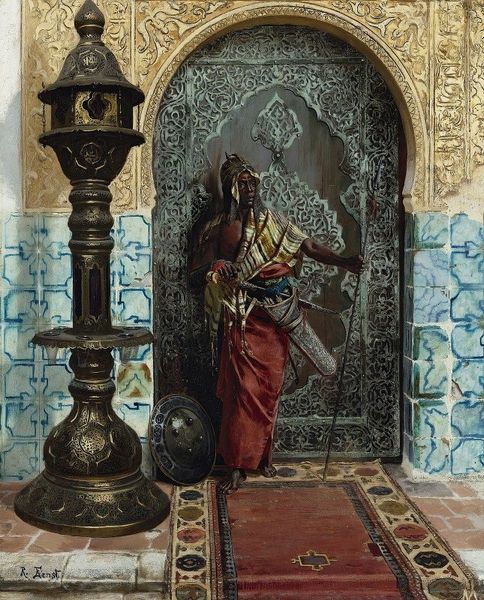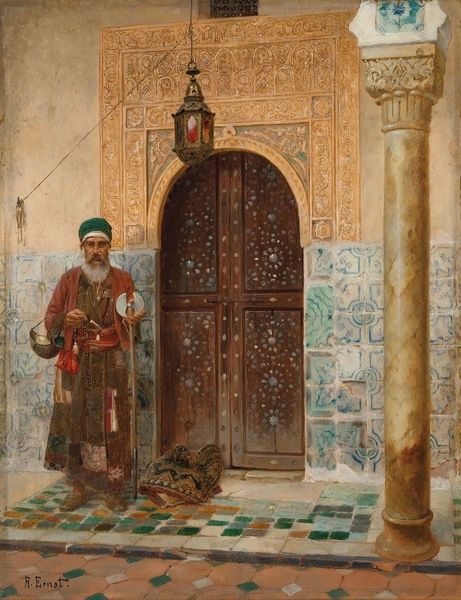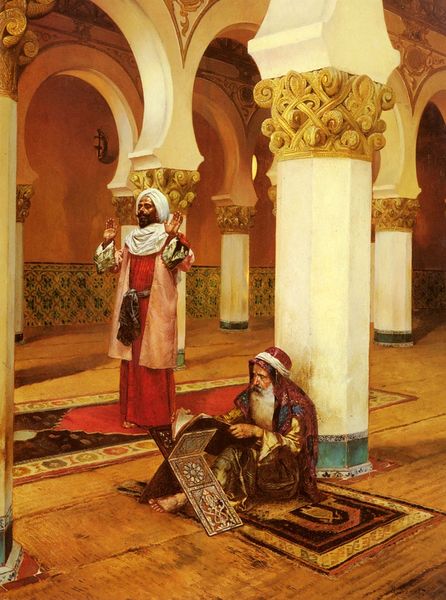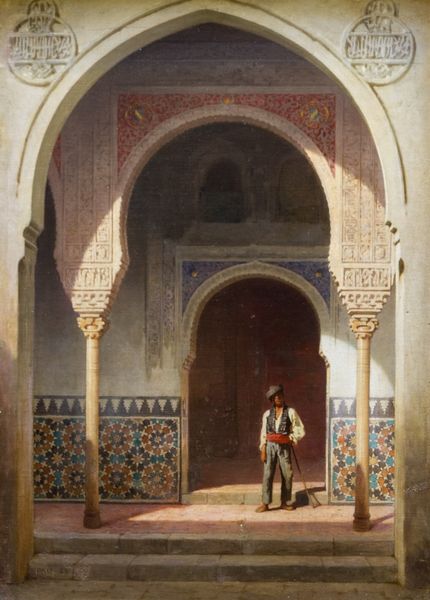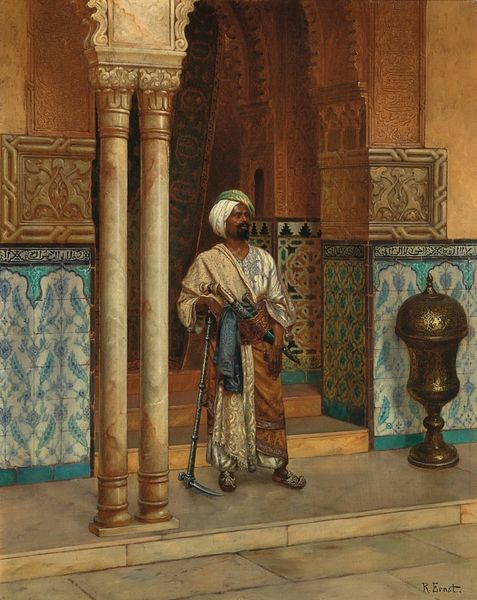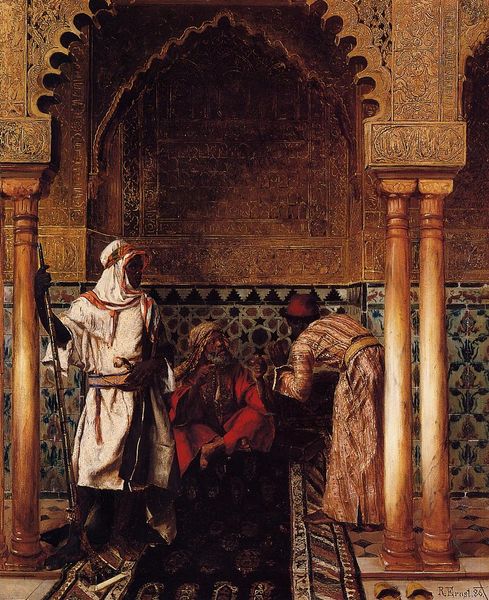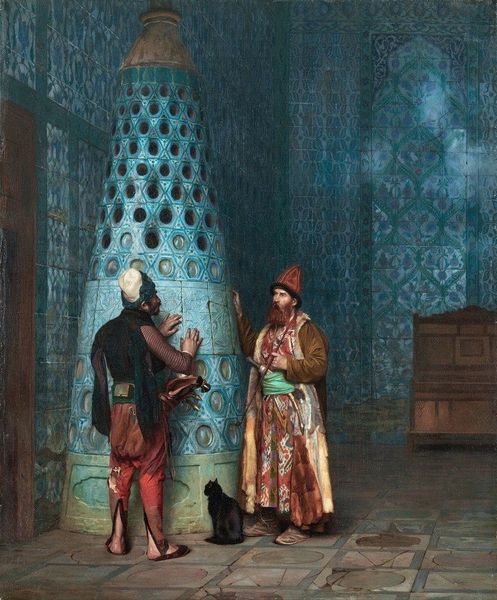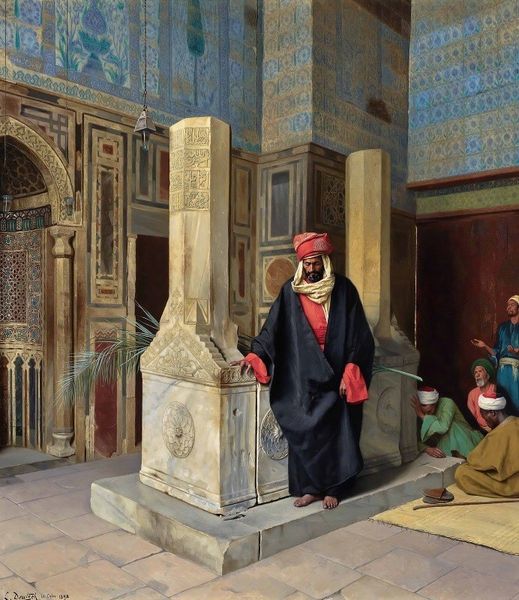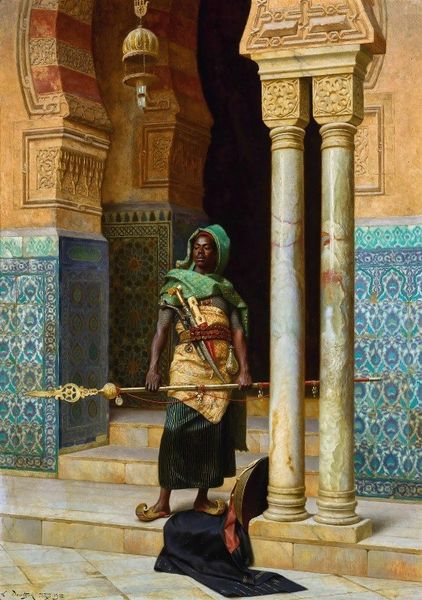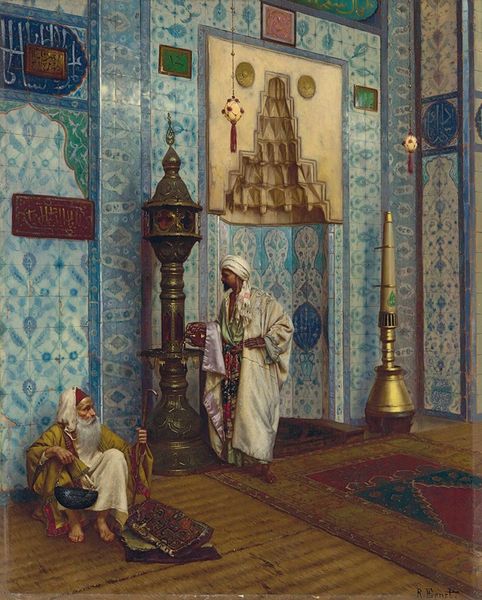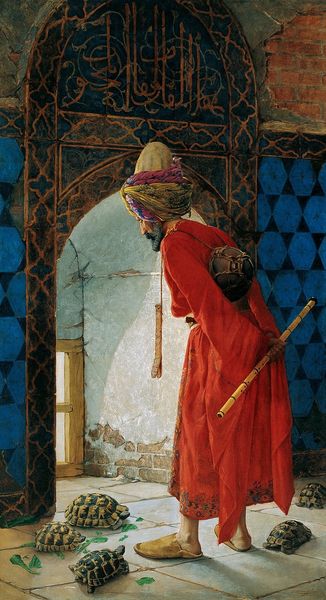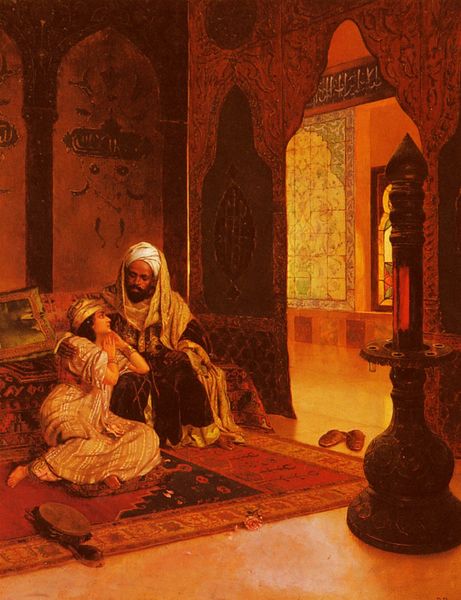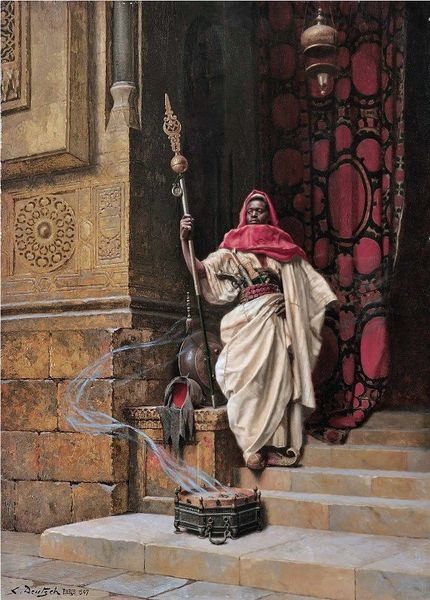
painting, oil-paint
#
portrait
#
figurative
#
painting
#
oil-paint
#
figuration
#
oil painting
#
orientalism
#
islamic-art
#
genre-painting
#
mixed media
#
realism
Copyright: Public Domain: Artvee
Curator: Standing before us, we have an oil painting attributed to Rudolf Ernst, commonly known as "The Prayer," showing a man in traditional Islamic dress in what appears to be a mosque. Editor: It’s immediately serene, isn't it? That cool, diffused light feels like quiet contemplation made visible. I can almost hear the whispers. But there's also this kind of removed gaze that I find distancing somehow. Curator: Yes, Ernst, though of Austrian origin, painted quite a few Orientalist scenes like this, capturing North African and Middle Eastern subjects. He was well known for genre paintings and architectural depictions within Islamic art contexts, popular in late 19th and early 20th century Europe. The perspective, drawing us through arches within arches to glimpse a higher place in the mosque. It offers a controlled access point to an imagined world. Editor: Imagined is the key word here. I wonder, was it important for him to truly convey the authenticity of prayer and faith? Or to rather serve as a window into an “exotic” culture? I can't quite tell. There is the golden candle stand very prominent and precisely placed at the right to hold my wandering attention and makes me want to question everything and everyone. The man praying himself seems slightly detached, more about the form rather than inner experience. Curator: Precisely. While Ernst demonstrates skillful realism, capturing textures and architectural detail, art historians would observe that works like "The Prayer" reinforce certain power dynamics. The "Orient" became a site for European fantasy, a place of color, spirituality, and perceived timelessness contrasted against industrialized Europe. It's about European conceptions more than ethnographic truth, as are the great majority of Orientalist works. Editor: I agree; this brings it into a modern framework of appropriation rather than true cross-cultural bridge building. A snapshot sold for the consumption of others! Perhaps it’s that very question mark which I project onto it, rather than peaceful harmony that should emanate. Regardless of the art historical debates and orientalist critiques, Ernst's skill with color is undeniably quite gorgeous. That dusty rose and mellow gold are doing things. Curator: Absolutely. Examining pieces like "The Prayer" helps us understand how artistic taste reflects wider cultural interactions, revealing how the visual arts can play into political discourse and shape cross-cultural understandings. Editor: Well, my aesthetic sensibilities may always be a little conflicted here. But it's good food for thought.
Comments
No comments
Be the first to comment and join the conversation on the ultimate creative platform.
